READ: ISO
| Site: | MN Partnership for Collaborative Curriculum |
| Course: | Digital Photography |
| Book: | READ: ISO |
| Printed by: | Guest user |
| Date: | Sunday, December 14, 2025, 4:02 AM |
Description
.
ISO
ISO (International Organization for Standardization)
Quality of a photo can be greatly be affected by the ISO setting on a photo.
ISO is how sensitive to light your camera's sensor will be. In the days of film, this would be the speed of the film you were using. A high ISO means that your camera will be more sensitive to light and a lower ISO means you camera will be less sensitive to light.
If you are in a dark room you may want to set your ISO to a higher number like 400 to compensate for the lack of light in the room. That way, your film will be faster and absorb more light. If you are outside on a sunny day you may want your ISO to be lower, around 100 or less, because you won't need to have fast film.
A higher ISO will increase the noise or graininess of your picture. So, there may be a lack of light in the room and you will have to compensate for it by pumping up your ISO. You will be sacrificing film quality for light.
A good camera will be able to use a higher ISO and still achieve a clean soft photo instead of a grainy photo. However, most point and shoot cameras have trouble with high ISO settings. Point and shoot cameras usually auto set the ISO to what it thinks is best but this may not always be the desired effect.
Changing your ISO may require changing your shutter speed or aperture in order to get a good quality photo. ISO can be a good way to get the exposure you want and still be able to use the shutter and aperture setting you need to get the effects you were wanting on your photo.
Here is an example: you want to us a faster shutter speed to help steady your hand held shot but you also need to close your aperture as much as possible so everything is in focus. You take a photo and find your photo is under exposed. Simple solution up your ISO, now you can use the settings you want and still get a great photo.
Example of ISO 1600
Here are some examples of ISO in photographs that I have taken:I went to Sea World with my family and brought my camera. We went into the eel tank room which was really dark. I wanted to take pictures of the eels but my aperture was open as wide as possible and my shutter was as slow as possible (without causing the picture to be blurry) but I still couldn't take good pictures of the eels. I was forced to bump my ISO up to 1600 so that my sensor would be fast enough to record the light. I caught this image:
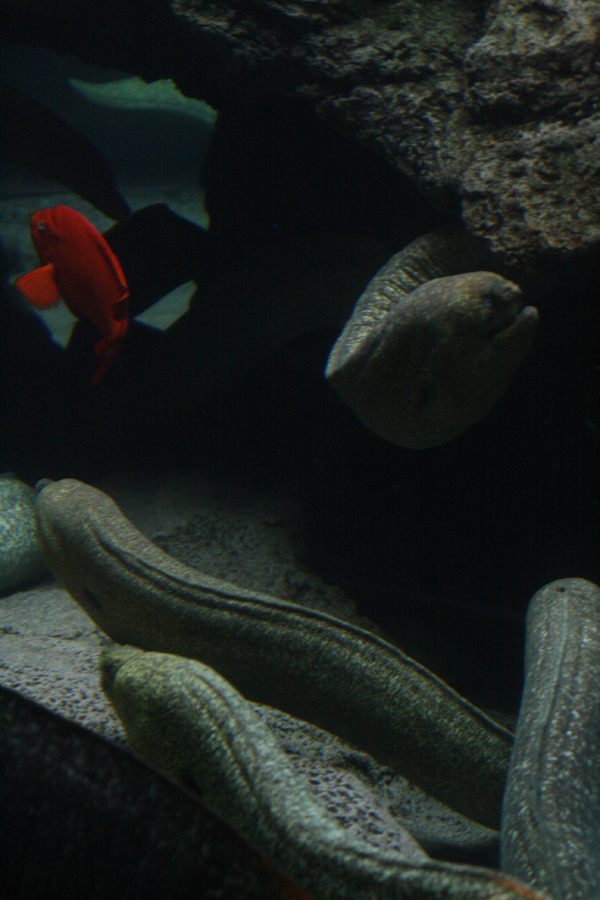
Now, that image is okay. However, it might be hard to see how grainy and what bad quality it is. Here is a zoomed in part of the image so you can see how ISO 1600 affected this image:
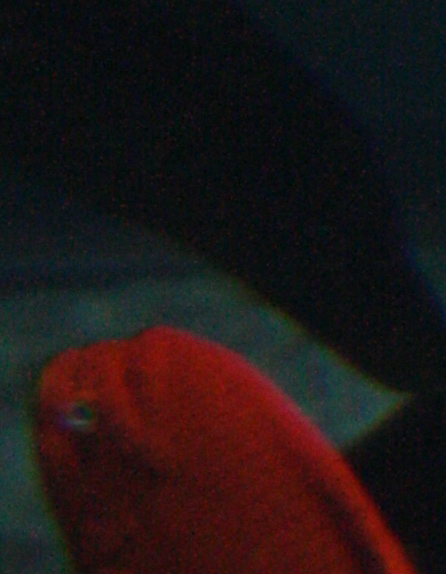
So you can see that ISO 1600 caused some SERIOUS grain issues and caused the picture overall to be extremely fuzzy.
Exmaple 2 of ISO 1600
Here's another example of ISO 1600. I went to the bowling alley and of course, it's really dark inside. This picture was taken with ISO 1600 because there was just not enough light in that alley to take a picture: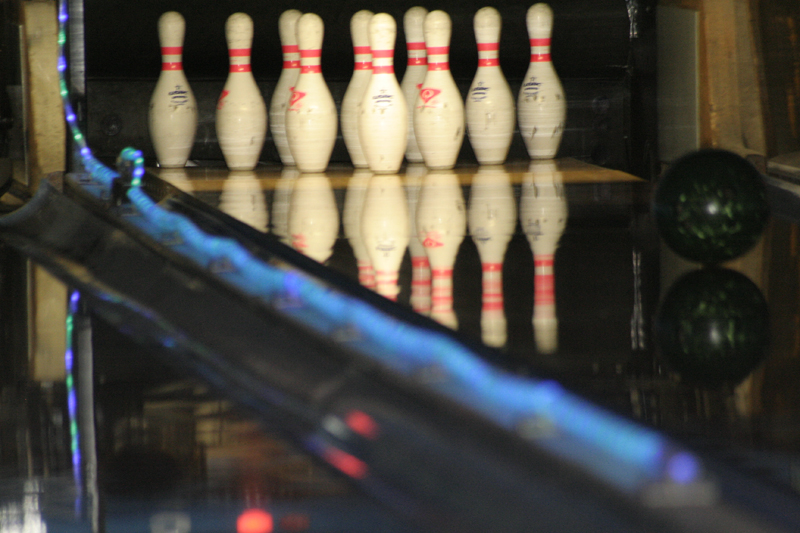
You can see the graininess pretty easily on this one, but here's a close up just so you can tell the quality of the image with ISO 1600:

Example of ISO 200
I took some pictures of my little cousins. They are 8 and 10 years old and we went to a park in the middle of the summer. It was very hot outside, meaning the sun was definitely out, therefore - TONS of light was available to me. Having tons of light means freedom to put your setting where ever you want to get the desired effect. I set my aperture and shutter speed up to where I wanted them (in this case, my aperture was at f/2.8 to get tons of light through the lens and my shutter was at 1/250 of a second) and then I set my ISO to 200. I did not need a fast film speed because the girls 1) weren't moving and 2) had plenty of light on them. Here is the image that I took:
You can see how much more crisp and clear this image is when compared to the ISO 1600 image. Here is a close up so you can see the clear-ness even more:
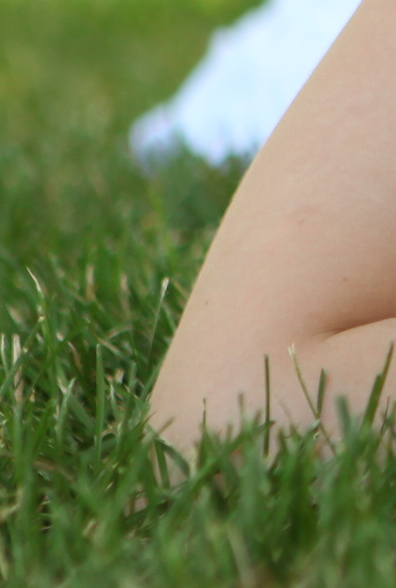
Example of ISO 100
I did senior pictures for my other cousin. It was a bright cloudy day, so plenty of light. I was able to leave my ISO at my camera's lowest ISO setting, in this case, ISO 100. The pictures were great quality because I shot at ISO 100 all day. Here is an example followed by a close up: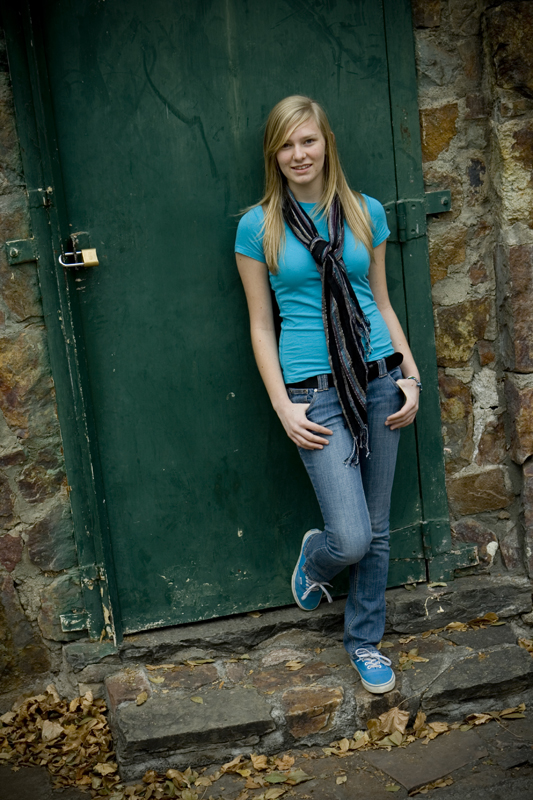
See how the close up has none of the graininess that the ISO 1600 images have?

Summing it up
So there you have it. A few examples of how ISO affects images and how it can help you or hinder you in different circumstances. Remember, there are lots of different ISO settings (100, 200, 400, 800, 1600, 3200, etc etc) and I just showed you the 2 extremes - really low ISO and really high ISO. Your ISO sensor is also better depending on you camera type, so a higher ISO might not be as grainy on a more expensive camera.Moral of the story:
ISO 100 = very clear but very dark images. Must use this when you have tons of light coming into your camera.
ISO everything else = for all situations in between!
ISO 1600 = very grainy but can bring lots of light to the scene. Must use this when you have no light and you have to sacrifice film quality.